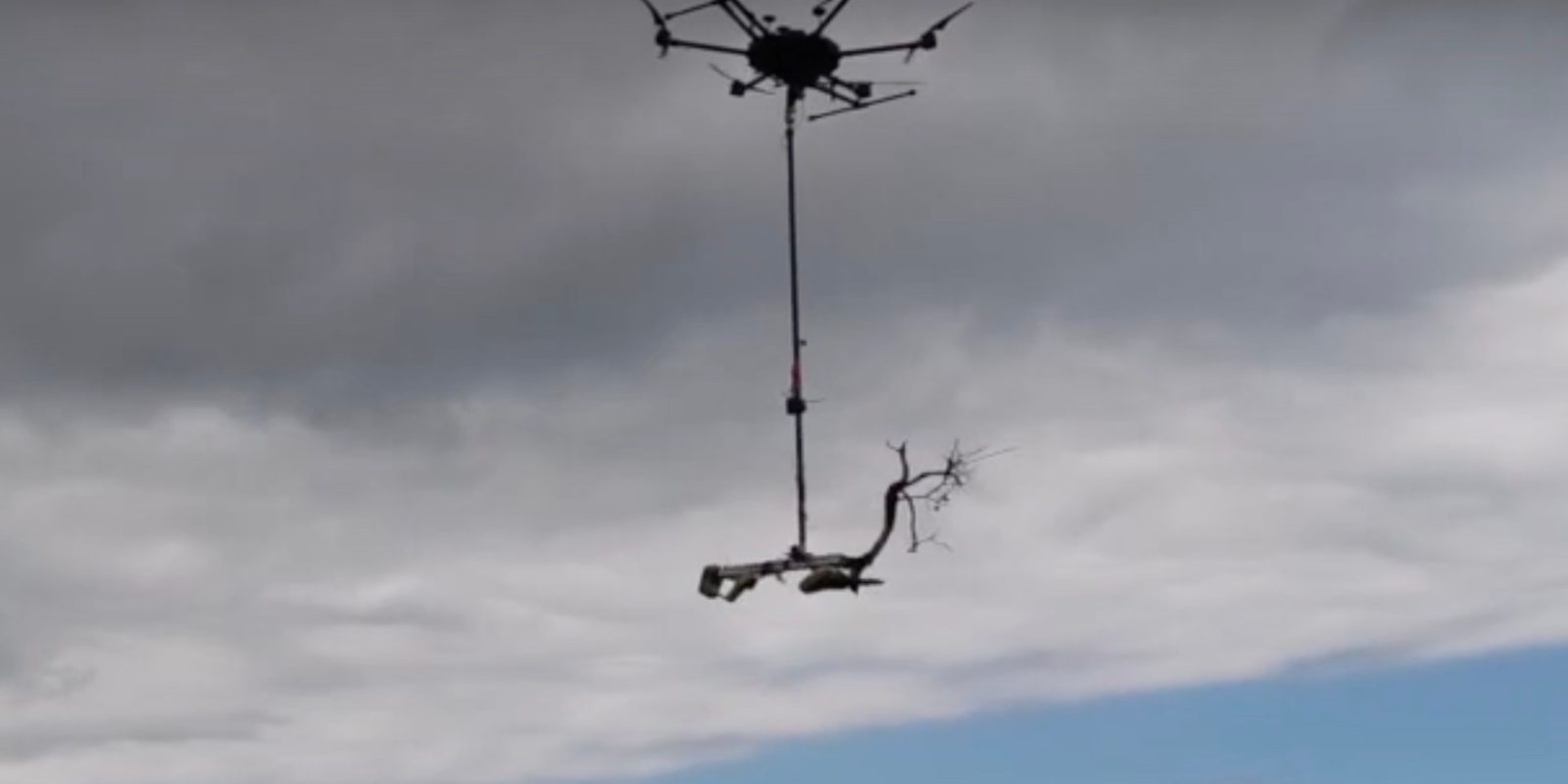
Innovating botanists in Hawaii are again adapting tech loaded on drones to preserve native plants from extinction in areas too remote or dangerous for humans to access – this time on Hawaii Island to battle Rapid ʻŌhiʻa Death (ROD) fungus killing indigenous ʻōhiʻa lehua trees.
The new drone hack is the work of Ryan Perroy, a professor at the University of Hawaii, Hilo’s department of Geography & Environmental Science, and director of its Spatial Data Analysis and Visualization program. A tireless DIY geek, Perroy found a way to super-size an existing UAV-carried device for cutting and collecting plant samples in hard to reach places with a twist Tobe Hooper would love – using a dangling chainsaw with a gripping robotic claw.
Read: Drones lead Hawaii’s coconut rhinoceros beetle battle
Unlike the original tool developed by researchers at the Swiss public research university ETH Zürich, Perroy’s larger adaptation can saw off and haul back larger cuttings botanists in Hawaii need to accurately test for ROD – while also relying on the drone for locating and pruning ʻōhiʻa lehua in spots otherwise impossible to reach.
If effective in identifying and treating infected trees, the method could prove vital in saving the threatened and beloved native species.
ROD is a fungal disease that was only identified in Hawaii in 2014, and has since become a fast-spreading menace that has killed hundreds of thousands of ʻōhiʻa lehuas. Carried between areas on the clothes of hikers, animal fur, or even the wind, ROD clogs the tree’s system for circulating water to its canopy, causing dehydration and death. Preservation of the species is vital to ecosystem and watershed balances, and safeguarding certain cultural traditions centered on the species.
Back in 2019, Perroy heard about the Swiss drone attachment for cutting samples but found it too small to bring back branches samples Hawaii’s botanists need to accurately test for ROD infection. So, he increased its scale to include a chainsaw and articulated robotic gripper to hang on to bigger branches, and found local partners to produce it using 3D printing tech.
The upshot: While smaller aerial samples returned zero positive results of ROD, fully 77% of larger diameter cuttings from the same trees showed presence of the fungus.
“We successfully detected the target fungal pathogen from the collected branches and found that branch diameter, leaf presence, and condition, as well as wood moisture content are important factors in pathogen detection in sampled branches,” Perroy said.
Read: Drone flown robotic arm revolutionizes Kauai’s rare flora preservation
Adaptation of the device was funded by Department of the Interior’s Office of Native Hawaiian Relations, the National Park Service, and Conservation X Labs. It followed Perroy’s work using various sensors aboard drones to detect ROD on Hawaii Island, which he continues to develop concurrent to the flying chainsaw method.
Those aerial approaches are similar to work by botanists on Kauai Island. Their earlier use of drones to identify native plants threatened with extinction on dangerous cliff faces more recently adopted a tailor-made cutting unit to take airborne samples for preservation and reproduction purposes.
FTC: We use income earning auto affiliate links. More.

Comments